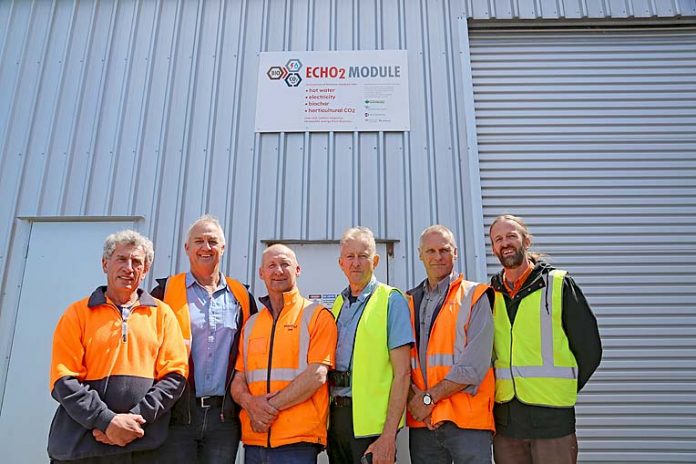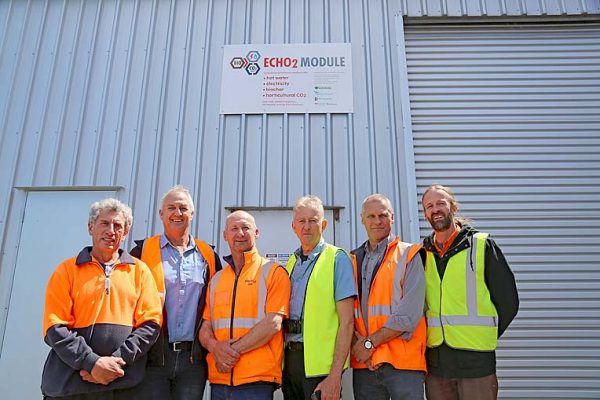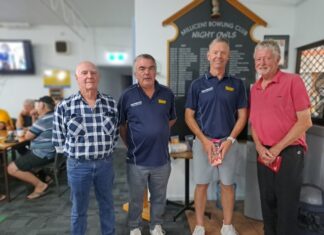

TWO South East businesses have joined forces to deal with biomass waste and energy production while reducing their carbon footprint through a technology breakthrough.
In a bid to decrease rising electricity costs and embrace a cleaner source of gas, Tantanoola herb and produce company Holla-Fresh has installed a fully-automated unit which converts wood waste into hot water, electricity and carbon dioxide.
The $1.4m ECHO2 unit produces baseload, low cost commercial quantities of energy and is fuelled by excess timber harvested from Mount Gambier-based Van Schaik’s BioGro.
The innovative system was developed by Rainbow Bee Eater – a consortium of farmers, scientists and engineers – with support from SDA Engineering, AusIndustry and the Western Australia and South Australia state governments.
Holla-Fresh managing director Ian Lines said the company had undertaken a global search seeking environmental and user-friendly biomass systems.
“A lot of the times the systems just do not stack up or you have to buy your fuel in at a high cost,” he said.
“When we heard about this technology it was almost like it was too good to be true and we are going to prove that it is true.
“The push has been on for biomass energy and electricity generation and this area is perfect for it.
“We have millions of tonnes of waste timber that can be used for producing energy.”
The automated ECHO2 package sees timber waste enter the processor before it is converted to gas.
The gas progresses to either the boiler, where it is converted into hot water and rich exhaust carbon dioxide suitable for the glasshouse, or the gas engine, where hot water is produced.
Alternately, the gas can move through the gas engine and enter the generator, where it is converted to electricity.
The process can also be undertaken simultaneously, with gas entering both the gas engine and boiler.
Mr Lines said while the use of carbon dioxide in stimulating growth in tomatoes, capsicum and peppers was well documented, little was known about its use in the herb range.
“The critical part is not only about increasing growth, but also increasing the inner health of the plant.
“If you can increase it in a healthy way, then the plants can start having more resilience to disease, pests and insects.
“The stronger and better we make these plants at their core, the better shelf life it has, the less insecticides and chemicals we have to use and importantly, the better food it is for people.”
Van Schaik’s BioGro managing director Stephen Van Schaik said the collaboration was a prime example of a circular economy, with the company attempting to keep its excess timber waste in use as long as possible.
“We transport construction timber to our Melbourne facility where we shred it on site, transport it back here and then we process it on site at our Wandilo facility so Holla-Fresh can use it though the equipment.
“It works for our model of transporting forest and timber residue to Melbourne and then backloading it.
“We modified our existing equipment to make sure the excess timber can be used in the process, which complements what we already do.
“From that perspective, the partnership is very complementary for us.
“There are many companies that are recycling timber, but not to the extent we are doing for this process.
“This is all new and it looks simple, but there is a lot of work involved.”
Mr Van Schaik said there was scope for industry to expand opportunities with waste timber, which would otherwise be diverted to landfill.
“In Melbourne alone, the waste timber market is big and growing and a study in 2013 found there was half a million tonnes of waste timber generated per annum,” he said.
“About 100,000 tonne of it is treated, which is basically not good for anything, but of the remaining 400,000 tonne, only 160,000 tonne is recycled.
“That means there is 240,000 tonne that is going into landfill that could be going into processes like this.”
Rainbow Bee Eater managing director Peter Burgess likened the union of the two local companies as “nirvana” for industry and the environment.
“Ideally, we would like to see one of these in every regional community using energy, either in their little industries or actually driving the community itself,” he said.
“In regional areas like the Limestone Coast, where there is an abundance of crops and forestry, it’s a no brainer.
The developer and supplier of the unit said the system’s byproducts – which include high-quality biochar, wood vinegar and smoke water – would be investigated by the company.





